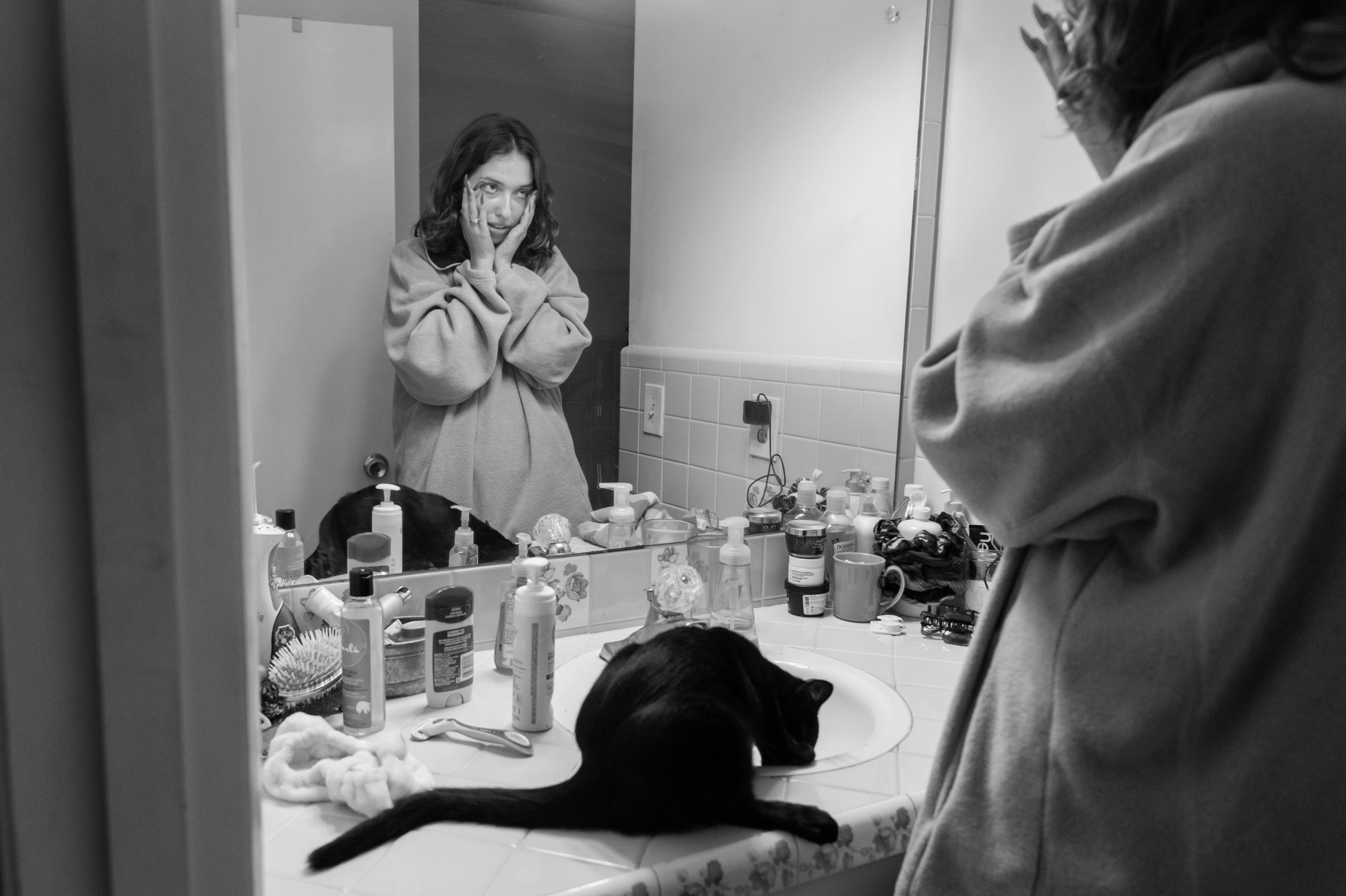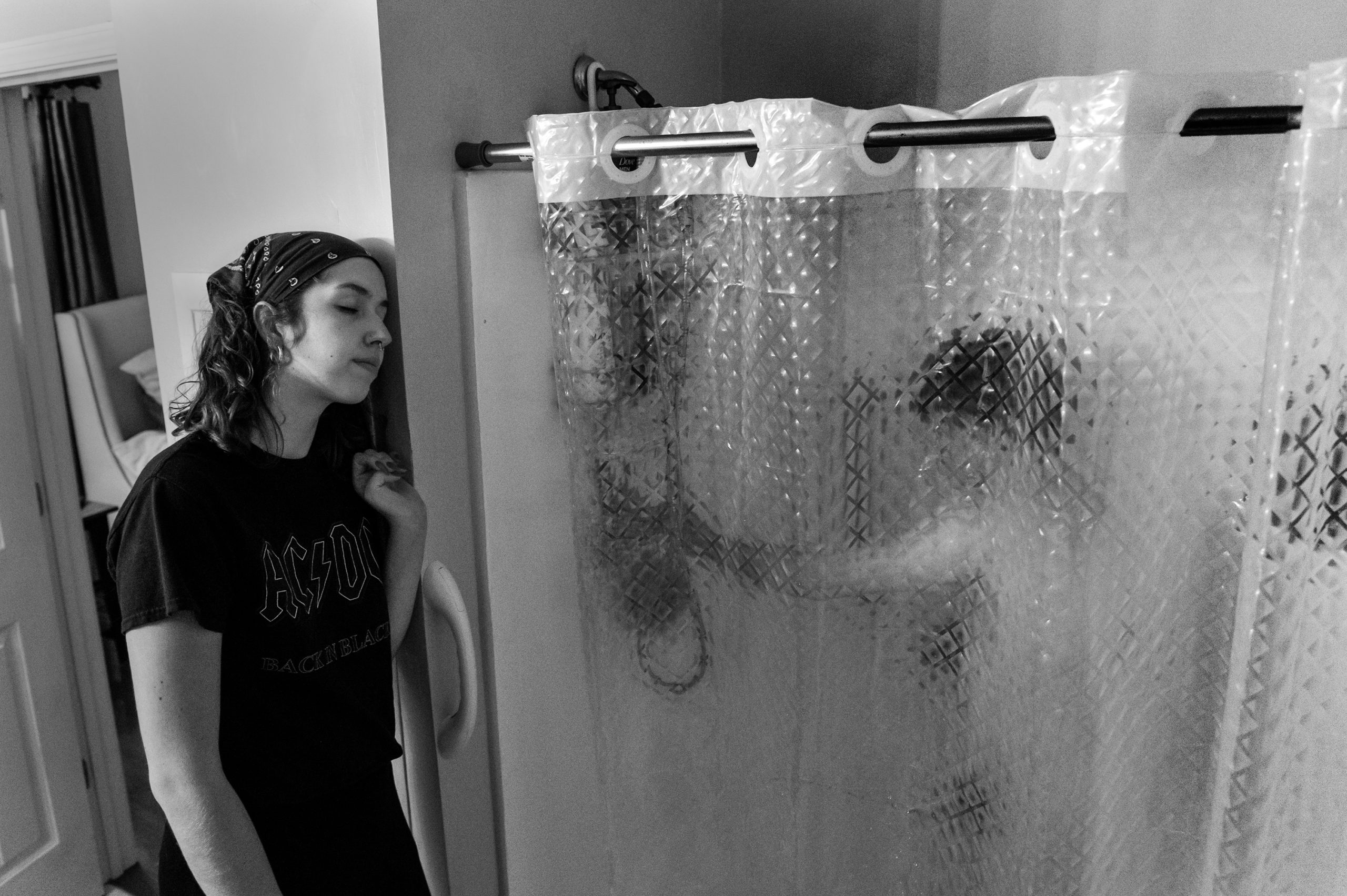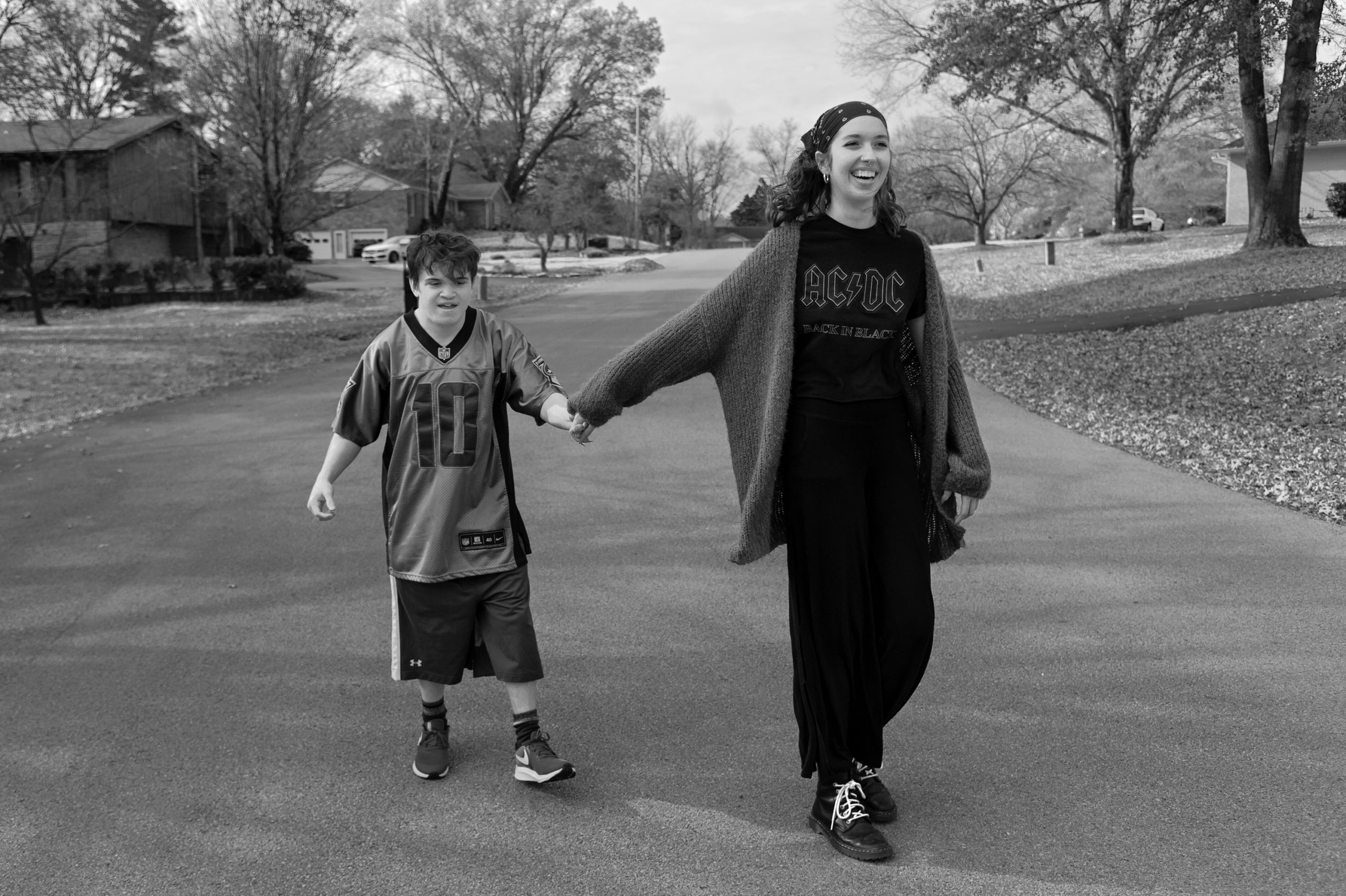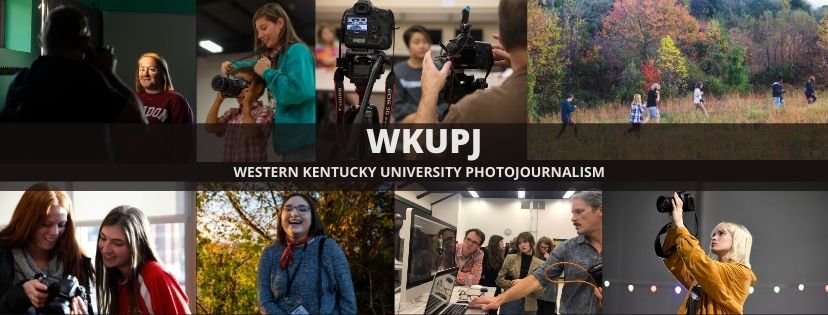WKU Photojournalism major, Sam Mallon, a Junior from Silver Springs, Maryland, documents college student Maggie Smith as she learns to navigate a pandemic as a student in a field that requires hands on connections, in the Interdisciplinary Early Childhood Education program. The limitations of virtual learning was recently balanced out as Smith began caring for Rush Renshaw, a 17-year-old boy with low-functioning Autism Spectrum Disorder. You can view the entire project here.

“I think that my education wasn’t individualized the way education should be. I was expected to work at the same pace as everyone around me and I constantly felt stupid,” Maggie Smith said. “I’m not stupid. I’m pretty smart. I’m not able to learn the same way as everyone else, and that’s okay, but I was never told that that was okay. I was always just seen as slower.” Smith has ADHD and spent most of her life trying to figure out how it affected her learning. She now understands it better, but her ADHD can leave her to cram during finals week and end her days exhausted, in the middle of the morning. As an aspiring teacher, she wants to help neurodivergent students understand their diagnoses earlier, so they don’t have to go through standardized education the way she did.

“As Donna, [Rush’s] mom, was walking me through his routine, I just fell into place and I was just doing it like second nature like I’m working at Sproutlings again, and then I spent a night with him an entire day and an entire night and it was totally fine,” Smith said, “When I got there, I just realized I’m completely qualified for this. This is literally what I’m meant to do.” Although respite work on top of school and a part-time job making pizza is a lot for Smith to juggle, she is grateful for the opportunity to learn from and with Rush.

“I talk to [Rush], like I talk to anyone else,” Smith said. “I interact with him the same way. He still talks to me, without using words, but I mean, it’s the same as a toddler not being able to talk to me with words, they can still communicate what they need and want.” Smith and Rush communicate very smoothly, though Rush is non-verbal. Smith recognizes cues about how Rush is feeling or what he need through body language. She knows he feels safe when holding her hand.
